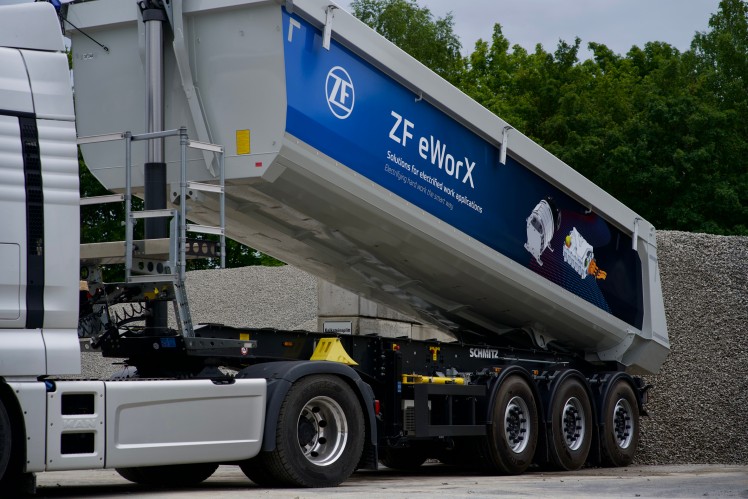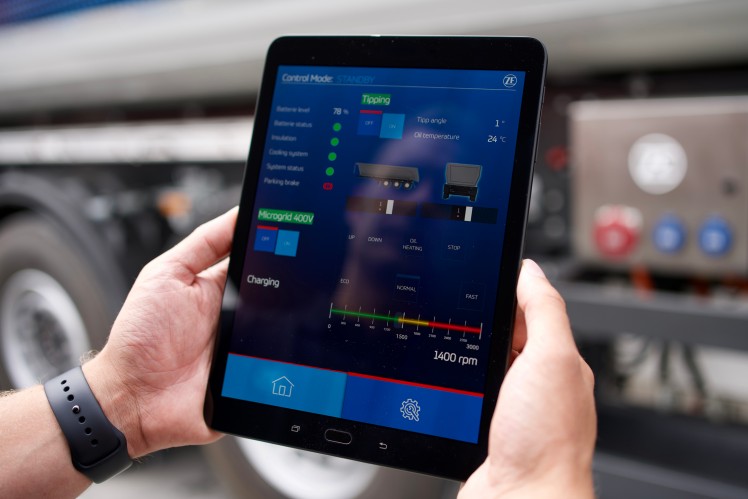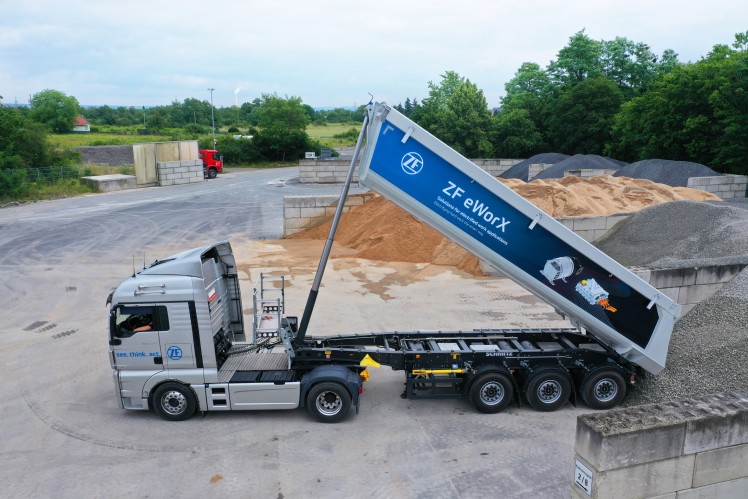When it comes to the electrification of commercial utility vehicles, the focus is not just on the powertrain. Approximately 50% of the vehicles in this segment have attachments in order to be able to do their job as municipal vehicles, in depots or on construction sites. Specially designed auxiliary drives, so-called power take-off (PTO), are required for this. In conventional vehicles with combustion engines, these are coupled to the engine or the transmission. However, classic and electric powertrains are so fundamentally different that known interfaces are not usable. However, this problem is also an opportunity to fundamentally rethink the design of the PTOs.
The system supplier ZF from Schweinfurt, Germany is currently developing a solution for this challenge, which they call eWorX.
“With eWorX, we are massively simplifying the integration of equipment into new platforms and are providing the market with a new standard interface for attachments for commercial utility vehicles. We have found an intelligent solution that takes us one step closer to zero emissions. In this way, we support vehicle and body manufacturers in optimally mastering the complex challenge of electrification,” explains Kleber Vinhas, who is responsible for the product line of commercial vehicle drive train modules in the ZF Commercial Vehicle Technology Division.
With its complete solution, ZF supports manufacturers of commercial vehicles and attachments on their way to a lower carbon footprint.
The system consists of the ZF eCubE, which establishes the connection between the vehicle battery and the modular electric power take-offs ZF ePTO, which then drive the attached devices. The eCube also includes the power electronics and a control unit. Its software is individually tailored to the customer and his application. The eCubE can also be integrated into the vehicle’s battery and energy management via the CAN bus. Control of the attached devices with a smartphone or tablet from the driver’s cab is also an option.


